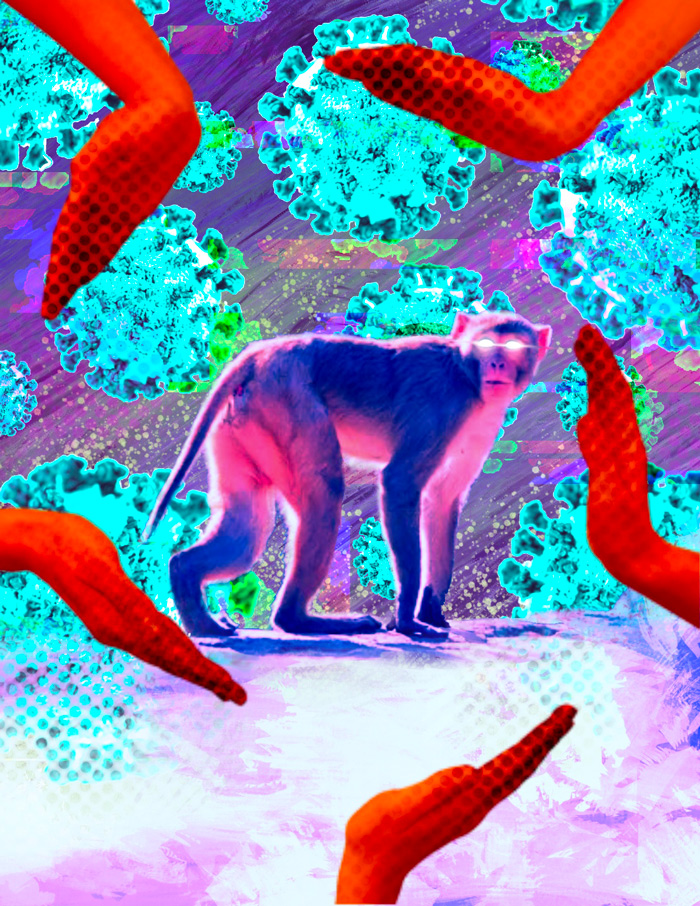by Alayna Filipak
Last year, monkeypox began spreading across the world and many feared another pandemic. Learn more about this virus, its history, and how it can be avoided.
In the wake of the COVID-19 pandemic, news outlets began to pick up on a sudden outbreak of the Monkeypox virus across the globe and many feared it was the beginning of another widespread pandemic. But what exactly is Monkeypox? Monkeypox, now referred to “MPox” by the World Health Organization, is an infectious disease that originated in small mammals in Central and West Africa. It is a member of the poxvirus family, along with smallpox and cowpox. The first identified human case was a nine-month-old boy in the Democratic Republic of Congo in 1970 and was then reported in eleven other African countries. Until recently, almost all cases were either endemic or related to international travel. In May of 2022, however, Mpox began cropping up all over the world and has been spreading more rampantly than we have ever seen before.
Mpox is most commonly spread between humans by physical or intimate contact with an infected person. Touching objects used by someone who is infected or having contact with rashes or scabs caused by monkeypox may cause infection, but sexual intercourse has been identified as the source of most cases since May 6, 2022. Experts from the World Health Organization believe that the decline in smallpox vaccinations, which are about 85% effective against Mpox, is a factor in the sudden increase in cases.
Symptoms of Mpox appear within three weeks of exposure, and flu-like symptoms may precede the formation of rashes near or on genitals, hands, feet, chest, or face. It may share the appearance of blisters or pimples and will scab over before healing. Headache, fever, chills, and muscle aches are additional symptoms that have been reported. Mpox can still be spread until all of the scabs have fallen off and healed over, but the illness typically only lasts 2-4 weeks.
Unlike its more dangerous cousin, smallpox, Mpox is less contagious and its fatality rate is much lower. The mortality rate of Mpox currently stands at about 3-6%, and only 20 of the 29,740 confirmed cases in the United States have resulted in death since January 1, 2022, according to the CDC. Outside of the United States, the most deaths in this same time frame have been in Brazil, having lost 14 people to the disease.
More locally, The Illinois Department of Health has confirmed 1,419 cases as of December 23, almost all of which are in the Chicago area. There have been no cases reported in Peoria so far, but the Peoria City/County Health Department still urges people to be careful of possible transmission. There are vaccinations available for Mpox that the CDC has recommended for those who have come in contact with it or are more prone to contracting it, but the World Health Organization has stated that mass vaccination is not yet needed. For the moment, the best way to avoid monkeypox is to not have physical contact with someone who has been exposed or shows symptoms. It is important to remember that, even with coverage of the virus dying out, Mpox is still highly transmissible and dangerous to those infected.
About Alayna Filipiak

Alayna Filipiak is a junior at Richwoods High School. She is part of the Track and Field team, Spanish Club, Interact Club and Science Club. In her free time, she likes to write stories and play video games. She hopes to become a lawyer in the future.
Art by Aryanne Westfall

Ary Westfall is a junior Interactive Media major and Theatre Arts minor attending Bradley University. She is the social media manager for DAT, creates webcomics in her free time, and enjoys all forms of sequential art. Ary hopes to break into the comic world or find work in pre-production art for television.

